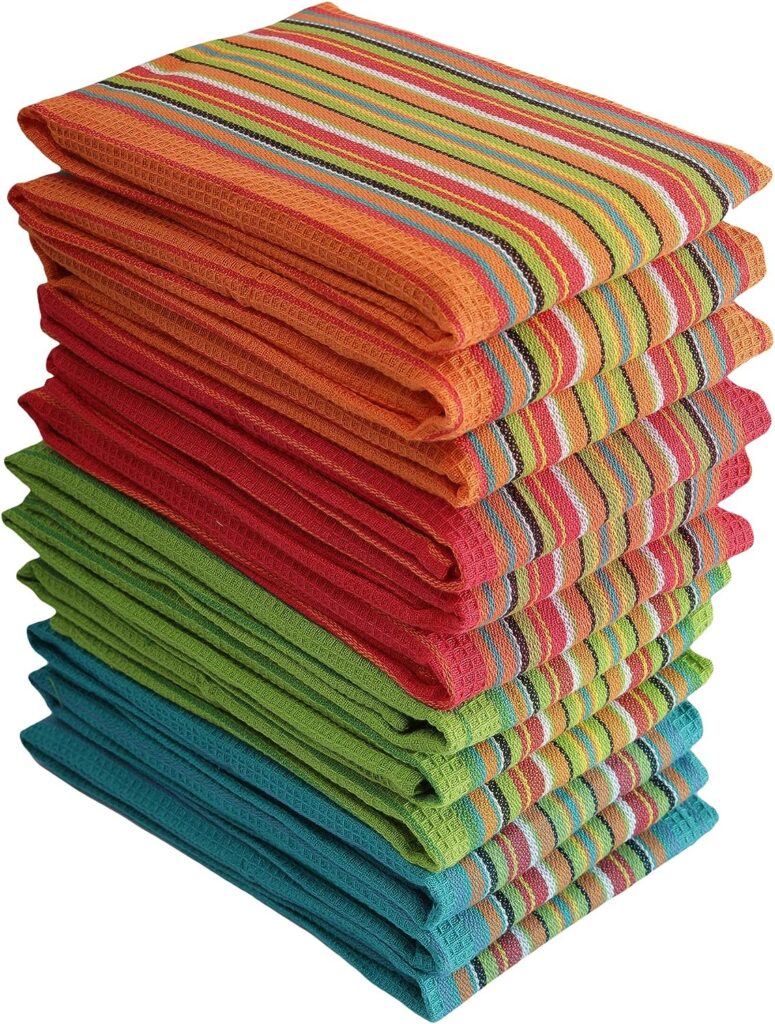Introduction
Tea towel artistry is getting illustrious day by day. In today’s world of interior design, where creativity and personalization are highly valued, simple household items like tea towels have transformed into a canvas for artistry. Tea towels are no longer just practical pieces used for drying dishes; they have evolved into decorative elements that can elevate the aesthetics of your home.
This article will explore the fascinating world of tea towel artistry, from its origins to its growing popularity as a unique and expressive home decor option. Tea towels have been a staple in kitchens for centuries, primarily used for drying dishes and hands. However, in recent years, they have experienced a transformation from simple functional items to decorative pieces of art. Tea towel artistry is a delightful combination of traditional craftsmanship and contemporary design, bringing joy and personality into home decor.
Table of Contents
The Evolution of Tea Towels
Tea towels, also known as dish towels or kitchen towels, have a rich history that dates back to the 18th century. Originally, they were made from linen and were used to dry delicate tea sets and glassware without leaving any lint behind. As cotton became more accessible, tea towels transitioned to this more durable and absorbent material. Over time, decorative elements and patterns were added, giving rise to the concept of tea towel artistry.

Embracing Tea Towels as Art
With the rise of handmade and artisanal products, tea towels caught the attention of artists and designers looking for unique ways to express their creativity. The blank canvas of a tea towel offered endless possibilities for artistic expression, and soon, these once humble kitchen essentials became miniature pieces of art that could elevate any living space.
Printing Techniques for Tea Towels
Tea towel artistry can be achieved through various printing techniques. The most common methods include block printing, stenciling, and embroidery. Each technique offers a distinct style and allows artists to create one-of-a-kind designs.
5.1 Block Printing
Block printing involves carving a design onto a wooden block, which is then dipped in ink or paint and stamped onto the tea towel. This process allows for intricate patterns and a handcrafted touch that adds warmth to any home.
5.2 Stenciling
Stenciling is a versatile technique that uses pre-cut stencils to apply designs to the fabric. Artists can use brushes or spray paint to create precise and repeatable patterns, making it a popular choice for those exploring tea towel artistry.
5.3 Embroidery
Embroidery is a time-honored technique that involves stitching designs onto the fabric by hand or using an embroidery machine. This method adds texture and dimension to the tea towel, creating a stunning visual impact.
DIY Tea Towel Art Projects
For individuals looking to unleash their creativity, DIY tea towel art projects offer a rewarding experience. Here are three simple and fun techniques to try at home:
5.1 Block Printing
[Step-by-step instructions for block printing]
5.2 Stenciling
[Step-by-step instructions for stenciling]
5.3 Embroidery
[Step-by-step instructions for embroidery]
Contemporary Artists in Tea Towel Artistry
Tea towel artistry has attracted numerous contemporary artists who use this medium to showcase their unique styles and visions. Some of the noteworthy artists in this field include:
6.1 Name of Artist 1
[Brief description of Artist 1’s work]
6.2 Name of Artist 2
[Brief description of Artist 2’s work]
6.3 Name of Artist 3
[Brief description of Artist 3’s work]
How to Choose the Perfect Tea Towel Art
When selecting tea towel art for your home, consider the following factors:
7.1 Consider Your Home Decor
[Guidance on choosing art that complements your home decor]
7.2 Reflect Your Personality
[Encouraging readers to choose art that resonates with their personality]
7.3 Seasonal and Holiday Themes
[Suggesting the use of tea towels with seasonal and holiday designs]

Using Tea Towels Beyond the Kitchen
Tea towels need not be confined to the kitchen alone. Their versatility allows them to be used throughout the house as decorative accents. Consider incorporating tea towel art into your:
- Bathroom decor
- Dining room setup
- Living room design
Caring for Your Tea Towel Art
To ensure the longevity of your tea towel art, follow these care tips:
[Instructions on proper care and maintenance]
The Eco-Friendly Appeal of Tea Towel Artistry
Tea towel art is not only aesthetically pleasing but also eco-friendly. Unlike mass-produced decor items, these handcrafted creations contribute to sustainability and reduce environmental impact.
Tea Towels as Thoughtful Gifts
Tea towel art makes for excellent gifts, especially for housewarmings, weddings, and other special occasions. Their uniqueness and personalized touch convey thoughtfulness and care.
Unleashing Your Creativity: DIY Tea Towel Art
Discover the joy of creating your own tea towel art with simple DIY projects. It’s a fantastic way to express yourself while adding a personal touch to your living spaces.
Conclusion
Tea towel artistry offers a delightful way to elevate your home decor. From traditional techniques to contemporary designs, these versatile pieces of art bring charm and character to any space. Embrace the creativity and uniqueness of tea towel art, and watch how these humble kitchen essentials transform into captivating works of art.
FAQs
- Can I use tea towels with delicate designs for everyday purposes?
- Yes, modern tea towels are designed to be both functional and decorative, so you can use them daily without worry.
- Are tea towels machine washable?
- Most tea towels are machine washable, but be sure to check the care instructions to maintain their quality.
- Can I create my own tea towel art without any prior artistic experience?
- Absolutely! DIY tea towel art projects are designed to be accessible and enjoyable for all skill levels




